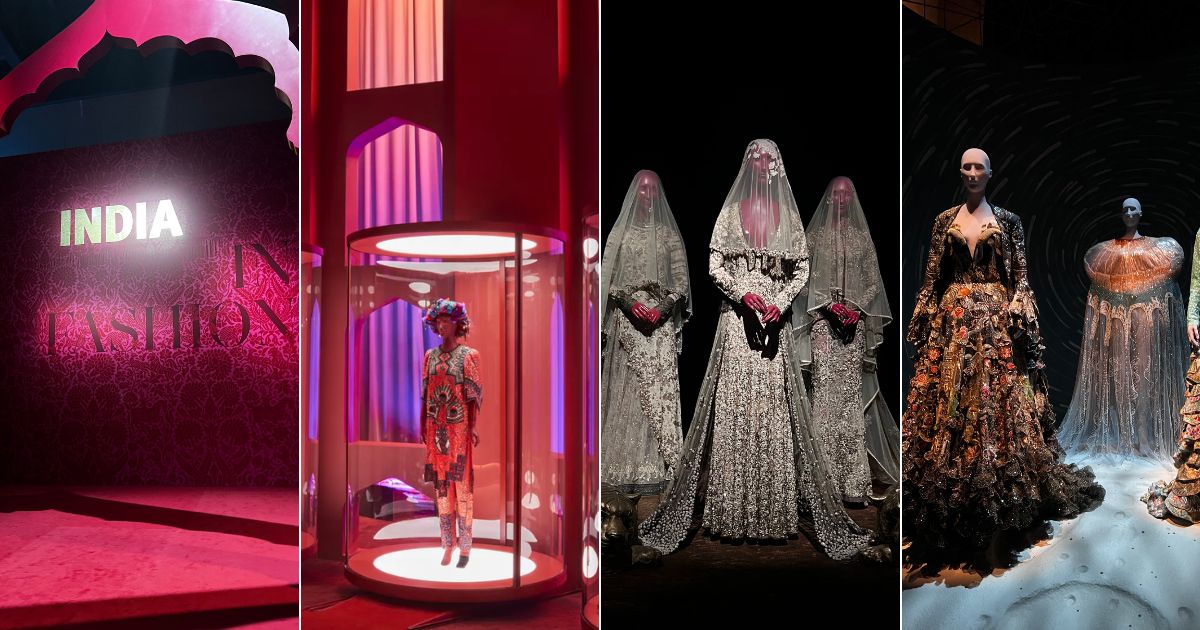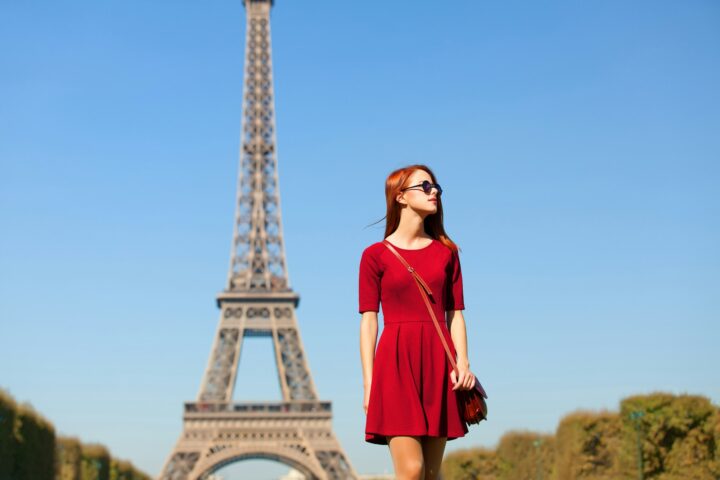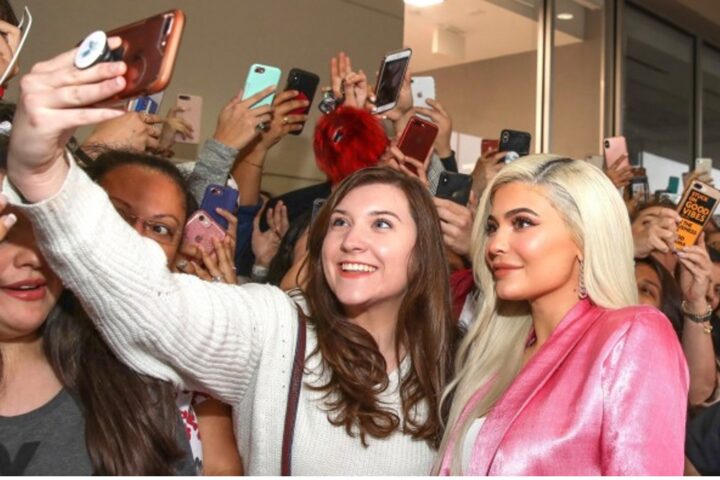Fashion exhibitions have recently grown in popularity despite being around since many years. Whether it be the Victoria and Albert Museum in London which has been hosting such exhibitions since 1971, or the Met Museum in New York, access and awareness of such platforms is on the rise. Fashion houses such as Christian Dior, Alexander McQueen and Giorgio Armani have also incorporated exhibitions as part of their retail experience. However, for India, while Indian craft and embroidery has been showcased on international platforms previously, the public at large has not had the chance to see India inspired global fashion under one roof! The currently ongoing ‘India in Fashion’ exhibition does just that and is a first of its kind, celebrating the Impact of Indian Dress and Textiles on the Fashionable Imagination at the Nita Mukesh Ambani Cultural Centre (NMACC) in Mumbai.
Curated by Hamish Bowles and designed by Patrick Kinmonth and the architect Rooshad Shroff, the exhibition highlights the influence of India’s rich cultural heritage, textile and craft on global fashion over the last 200 years. Heritage is key for luxury, and brands are now optimising their heritage as a means to highlight brand ethos and provoke a sense of brand attachment. Featuring over 150 exhibits from 14 museums, 6 Indian cities, 10 international cities and 7 countries, the exhibition is a glamourous showcase of Indian themed creations by international designers. Whether it be Chanel’s brocade coat or Phulkari heels by Christian Louboutin, or a re-imagined saree by Yves Saint Laurent, it highlights India’s strong influence on western fashion. The exhibits detail the fabric, type, explain the illustration and also specify the date of first such work. These are largely loaned either from private collections of individuals or from museums such as New York’s Metropolitan Museum of Art and Toronto’s Royal Ontario Museum. With the exhibition divided into several zones, it highlights Indian Silks and embroideries colliding with western tailoring in the 1830s, infusion with Italian fashion, with exhibits titled ‘Gathered in a Mughal Garden’, “The Hippie Trail”, “The Long Shadow of Muslin”, “The Journey of the Sari”, “The Great Exhibition London 1851” and so on. Not only are works of international designers showcased, iconic creations by Indian designers adorn sections of corridors gleaming with intricate detail and embroidery. These include works of Manish Malhotra, Sabyasachi Mukherjee, Anuradha Vakil and others. A walk through this exhibition has one realise the impact and value of Indian heritage and tradition, one which is still much sought after by reputed international brands constantly seeking Indian artisans and their work to adorn the brand’s haute couture.
As one of the two significant power-houses corporatizing Indian Fashion, Reliance Brands Limited (RBL) has, in the last few years, entered strategic partnerships with luxury home-grown designers such as Manish Malhotra, Anamika Khanna, Raghuvendra Rathore, Ritu Kumar, Rahul Mishra to name a few. It has also brought several international brands to India including Valentino, Balenciaga, Tiffany & Co. to cater Indian consumption choices which have over the years undergone international exposure. Reliance has also highlighted India’s artisanal products including handloom, clothing, textiles and handicrafts through ‘Swadesh’, artisan centric stores under the Reliance Foundation. These stores are selling the finest handicrafts ‘Handmade in India’ at the NMACC, showcasing Patola weaves to Venkatagiri, Tanjore Paintings, Blue pottery and much more. Indian handicrafts and handloom are considered the backbone of Indian rural economy since decades. Exports of handicrafts has seen a tremendous growth in the last decade – from USD 3.7 million in 2011 to USD 4.35 billion in 2022 indicating a global increase of demand for Indian handicrafts. The wave of sustainability has further shone light on handicrafts across the world. Aimed at bringing best of the world to India, and best of India to the world, the NMACC through its several initiatives is taking Indian fashion on a global platform.
Legal Considerations
While the exhibition focuses on the cultural and artistic aspects of fashion, there are legal considerations involved in such events. Intellectual Property Rights (IPR) are a crucial legal aspect in the fashion industry. Designers need to ensure that they have obtained the necessary permissions and licenses to use Indian textiles, patterns, and motifs in their designs – particularly, in the context of Geographical Indication protections. Also, designers must respect the copyright, and trademarks associated with items intrinsic to India’s cultural heritage. Additionally, the exhibition curators need to obtain licenses and permissions from museums, private collectors, and designers to display their works.
Moreover, the exhibition involves collaborations between Indian designers and international brands, highlighting the importance of contracts and agreements in the fashion industry. Strategic partnerships between Reliance Brands and luxury home-grown designers require well-drafted contracts that define the rights and obligations of each party. These agreements may cover aspects such as intellectual property ownership, exclusivity, royalties, and distribution rights. Furthermore, the exhibition’s organizers must comply with legal requirements related to event management, including permits, licenses, and safety regulations. They need to ensure that the exhibition space meets fire safety standards, accessibility requirements, and any other local regulations governing public exhibitions.
In conclusion, while the ‘India in Fashion’ exhibition primarily celebrates the artistic and cultural aspects of Indian fashion, several legal considerations come into play. Intellectual property rights, protection of traditional crafts, contracts and agreements, and event management regulations are essential factors to be addressed to ensure a successful and legally compliant exhibition. By upholding these legal aspects, the exhibition contributes to the promotion and preservation of Indian fashion heritage while respecting the rights of designers, artisans, and the larger fashion community.
Authors:
Radha Khera, Managing Associate at Remfry & Sagar
Anuj Kumar, Founder & Editor-in-Chief, Fashion Law Journal









